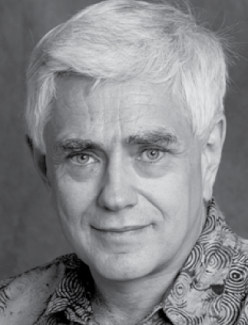Brazil’s Forest: Governance, Indian Reserves, and Narco-Deforestation

The world sweltered in the spring and summer of 2023, when heat waves broke historical records in Asia, Europe, and North America. The consensus is growing that much of this warming is indeed a consequence of climate change. World greenhouse gas emissions still increased in 2022, energy-related emissions (power, transport, industry) growing by nearly 1 percent to 36.9 gigatons. Tropical deforestation also increased by 10 percent to 4.1 million hectares, an area the size of Switzerland, emitting 2.7 gigatons of GHGs—equivalent to all of India’s fossil fuel emissions.
Although deforestation accounts for a much smaller proportion of GHGs than the energy sector, the role of tropical forests as reservoirs of much of the world’s biodiversity and as providers of ecosystem and climate mitigation services is extraordinarily important. Over 1.6 billion of the world’s poorest, including many Indigenous people, are dependent on tropical forest resources.
What’s remarkable is that, according to the World Resources Institute, over 43 percent of the tropical forest loss last year occurred in Brazil, adding 1.2 gigatons of carbon dioxide to the atmosphere—2.5 times Brazil’s total fossil fuel emissions. The Amazon forest still sequesters as much as one quarter of the CO2 absorbed by the earth’s entire land surface and feeds the rainfall of half a continent. Recent studies warn that the region may be approaching the point where it emits more GHGs into the atmosphere than it removes, if one counts the total of global warming gases released from clearing and burning forests, and the discharge of methane from decaying cleared vegetation and increased livestock production on former forest lands.
Between 2019 and 2022, Brazil, under the presidency of Jair Bolsonaro, provided a case study in how changes in governance can directly lead to increased ecological destruction. The politician, who proudly called himself the “tropical Trump,” was an ally of Brazil’s agrobusiness in the Amazon region. He vigorously advocated opening up existing protected natural and Indigenous areas for mining and agriculture. He and his allies in the national Congress drastically reduced enforcement of Brazil’s environmental laws, resulting in widespread illegal land grabs and surging deforestation.
Indigenous reserves in Brazil historically have an even better record of forest conservation than protected natural areas. Bolsonaro vowed he would not allow “one more centimeter” of land to be safeguarded for Brazil’s 1.7 million Indigenous people, claiming they had too much land already. Bolsonaro greatly weakened the government Indian agency FUNAI (National Indigenous Foundation), leading to uncontrolled encroachment and forest destruction on Indigenous territories. He was transforming FUNAI into what Brazilian researchers characterized as a militarized agency for anti-Indigenous policies.
Last year, Bolsonaro lost his bid for reelection, and on January 1 former President Luiz Inácio Lula da Silva was inaugurated for his third term. Lula had served two terms as president from 2003 to 2010, when he was a strong advocate for environmental progress and Indigenous rights. Lula is reversing the destructive policies of his predecessor. He has already recognized six new Indigenous reserves in which mining and agrobusiness would be banned, and pledged to end deforestation in Brazil by 2030.
In just six months there was very tangible progress. Satellite monitoring by INPE (Brazil’s Space Research Institute) revealed that the country’s deforestation had fallen by 33.6 percent in the first half of 2023 compared with the same period in 2022. But it’s too soon to declare victory, since the peak of the dry season, when most deforestation occurs, is between July and September.
It’s also much more difficult to restore effective governance than to destroy it. The biggest threat may be that the legal vacuum in the region created by the previous administration was viewed as a unique opportunity for powerful crime syndicates from Rio de Janeiro and São Paulo. In June the UN Office on Drugs and Crimes in its annual “World Drug Report” highlighted the magnitude of the threat of “narco deforestation” in the Amazon, where “the laundering of drug trafficking profits into land speculation, cattle ranching, and related infrastructure” has also expanded into illegal trade in wildlife, illicit fisheries, and illegal mining. Brazilian narco-gangs and environmental criminals are increasingly collaborating to seize more control of the region, sharing airplanes and covert landing strips used in opening up illegal mining to also smuggle drugs and arms. The UN report stated that the northwestern area of Brazil’s Amazonas state together with bordering areas in Colombia and Peru “probably [has] the densest concentration of organized crime groups on earth.”
Brazil’s Forest: Governance, Indian Reserves, and Narco-Deforestation.